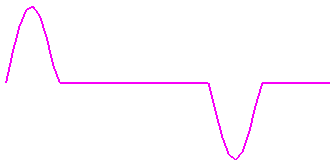
The chart below shows the distance from the wall that the cancellation effect will be most severe for various frequencies. That distance is always 1/4 of the wavelength of the frequency. At odd multiples of the 1/4 wavelength distance (1/4, 3/4, 5/4, etc.) the sound cancels. The sound is maximized at even multiples of the 1/4 wavelength distance (0/4, 1/2, 4/4, 3/2, etc.) where the reflections add to the original sound. The chart is based on a speed of sound of 1130 feet per second, which corresponds to a temperature of about 72 degrees Fahrenheit.
The formula relating wavelength to frequency is:
For sound at a temperature of 72 degrees, with the frequency in hertz and the wavelength in meters, this becomes:
See the calculator below to compute the speed of sound for other temperatures, or to see the effects of temperature and humidity on the wavelength.
This was page inspired by an article in Tape Op Magazine. Unfortunately the article isn't online, so I can't link to it. To get more information on frequencies and wavelengths and why this cancellation effect happens, you'll have to go to a physics book or search the web.



